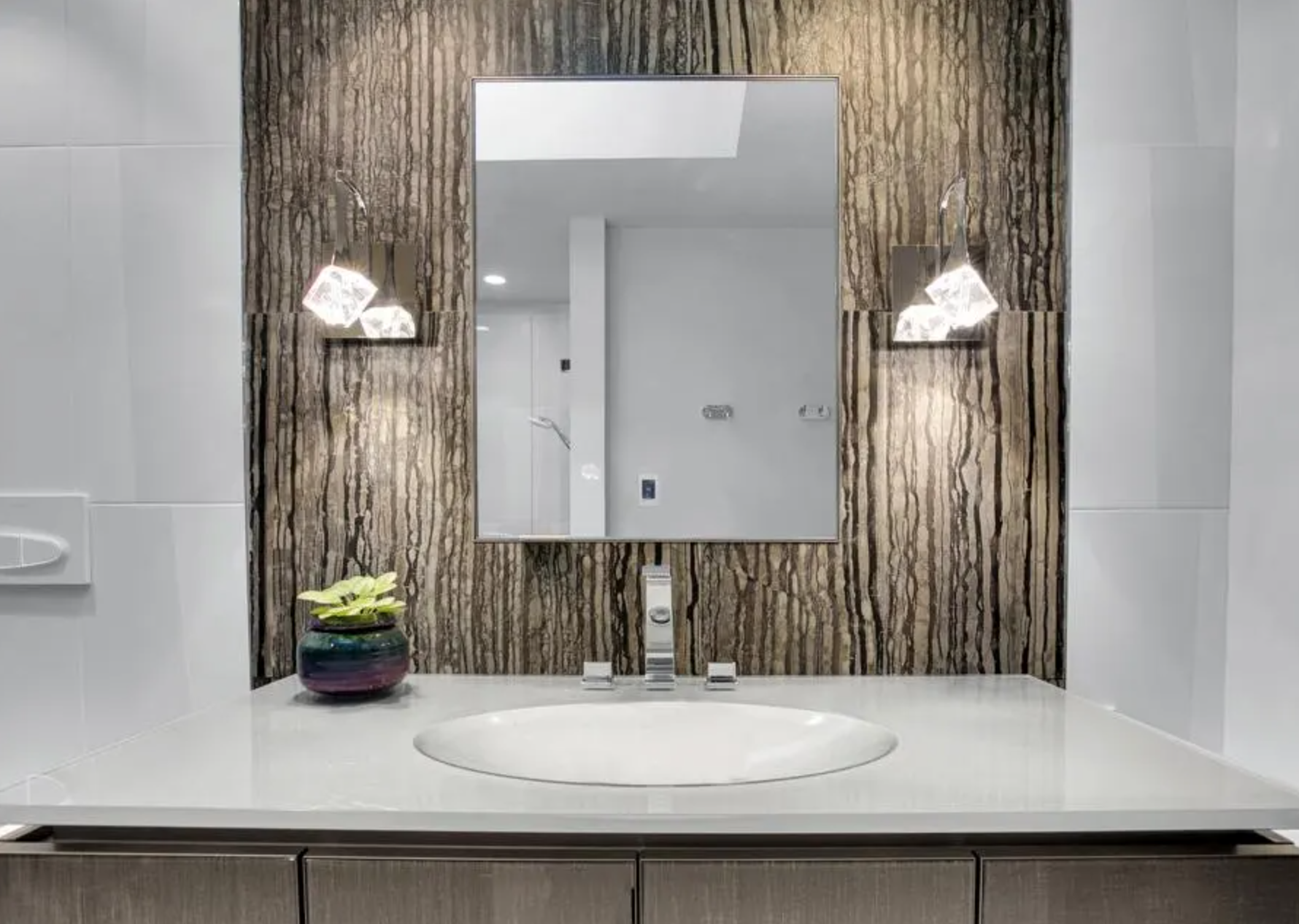Main Content
Blog
Blog Details
Five Tech Trends To Boost Wellness-Related Bathroom Designs

If you’re planning on remodeling a bathroom in your home, particularly the one in your primary suite, you’re probably going to be incorporating some technology in the project. While that might seem counterintuitive, many of the top trends rely on smart home features to make your space more spa-like. Homeowners’ desire to create spa-inspired primary bath retreats is certainly not a new trend. Neither is incorporating technology to enhance comfort and safety, but they are trending together in intriguing ways. Here are five of the tech trends enhancing wellness in homeowner bath updates.
Personalization Enhancement
Bathroom tech is becoming more centric in designs and more readily accepted by clients when calling out the benefits. In addition to increasing sales of digital shower controls and smart toilets, TVs in mirrors or placed at the end of the tub for a good relaxing soak supported by entertainment or music. Homeowners are also personalizing their bathrooms with technology capabilities. Heated floors, lighting, and sound systems in the bathroom integrating into the home automation system supplies an added sense of luxury and comfort. Additional features include motion-activated faucets, smart mirrors with fog-free technology, built-in lighting and electrical, as well as voice-activated sound and light technology. Some are opting for technology-enabled windows, specifically, smart glass for privacy that can also switch. When you want a fabulous vista, you select a view setting. When you need to block visibility from outside, (perhaps on gardening day), you opt for the privacy option. Floor heating is also a smart feature many are interested in; even Southern Californians want to avoid chilly feet!
Smart Lighting
LED technology is now 100% of the lighting products specified for bathroom remodels. Some of that is driven by its energy efficiency, which helps projects meet updated codes, but LEDs also allow for features that enhance wellness, safety and comfort. Homeowners are interested in its circadian and pathway illumination benefits for health and safety, respectively, but also its mood enhancement potential through chromotherapy. Most designs can have different scenes or moods combining several types of lighting in the same space, depending on use and time. These capabilities are tied into smart home systems that let you set and choose themes with a single click or voice command, like ‘Nighttime Relaxation’ or ‘Morning Start.’ Some higher end projects include circadian lighting and programmable moods. Systems allow for individual scenes or day/night events, as well as individual lighting options for tasks. Smarter task lighting can support shaving, makeup application and more easily reading instructions on prescription medicine bottles. There can be safety lighting included in bathroom projects for nighttime visits. LEDs are a designer’s dream: illumination for floors and cabinets, sensor and dimmer controls and multiple layers of lighting. Maximizing the lighting capabilities is another option in projects. Beyond the layered ambient and task illumination using LEDs, there are additional applications designed into lighting plans: Other details can include lights in the shower niches and under a floating bench, strip light in the toe kick or underneath a wall mounted vanity on a motion switch for a night light and lighting inside of cabinets and drawers.
Smart Showers
Enhanced lighting can extend into the shower for a wellness experience there too. The integrated technology allows the user to program and automate different waterfall moods to receive a rainfall, cascade, mist effect, etc. The spa experience is enhanced when different lighting options are integrated into its functions. Some homeowners are bullish on remote shower starts. Smart showers can either be in needs versus wants category. Some can unequivocally be opting for smart controls as a necessity. Adding an extra exhaust fan for the shower area can help to improve ventilation.
Smart Tubs
The NKBA report says 47% of tubs will have touch pad controls, 25% will have voice activated controls and 24% will have mobile app controls. Home automation allows to monitor a property from afar, prepare for arrival, schedule maintenance, etc. It’s likely that leak and overflow protection are also built into the smart home systems enabling this capability, with shut-off features to reduce water damage when there is an issue. That is particularly helpful for ski cabins and other properties with frozen water potential. By far, the desire for remote control features that allow the bath to be started from another location is high. People did not use their tubs because of the time it took to get them to temperature and fill [them], but technology is now giving the consumer access to do this from their car or the golf course or from the comfort of their living rooms.
Smart Toilets
The NKBA report cites a strong 60% penetration of smart toilets in residential bathroom projects. The highest items in demand in a ‘Washlet’ experience are the heated seat and the dryer. It is no longer an item you hide away, they are here to stay. Self-cleaning and bidet options add comfort and dual flush is a great help for water saving. The features homeowners are most interested in are personalized spray wand, stainless steel cleaning wand, heated seat, lighted base (for nighttime visits), hands-free seat cover, digital flush wall control, hands-free flush control and individual preference recall. The features most in demand are heated seats, motion detection self-flush and auto-wash, as well as a built-in bidet feature. Although smart toilets have a higher price tag, they provide luxury benefits that homeowners appreciate, especially those who are elderly. It just makes the overall experience so much easier for them.
Text by Jamie Gold | Photo credit on forbes.com | Read More Here



Login With
Or Sign Up With Disqus